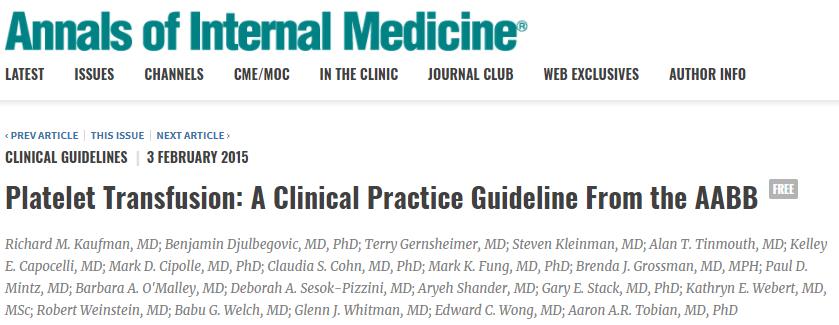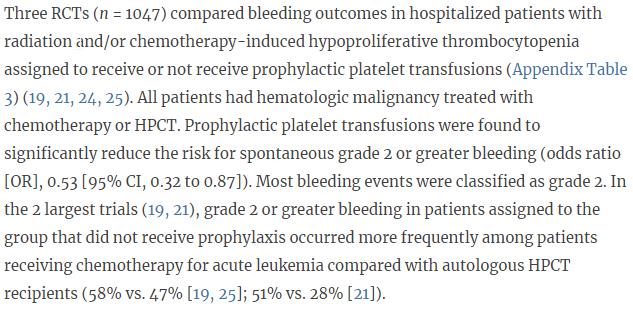-ICH is bad
-ICH is worse if your platelets are iatrogenically broken
-Non-broken platelets are good
-Transfusion of non-broken platelets helps stop the bad bleed
-Prophylactic in chemo patients
-CVC catheters
-Lumbar punctures
-Major surgery
-Cardiac Surgery
-ICH on anti-plt

Quality of evidence: moderate; strength of recommendation: strong.











